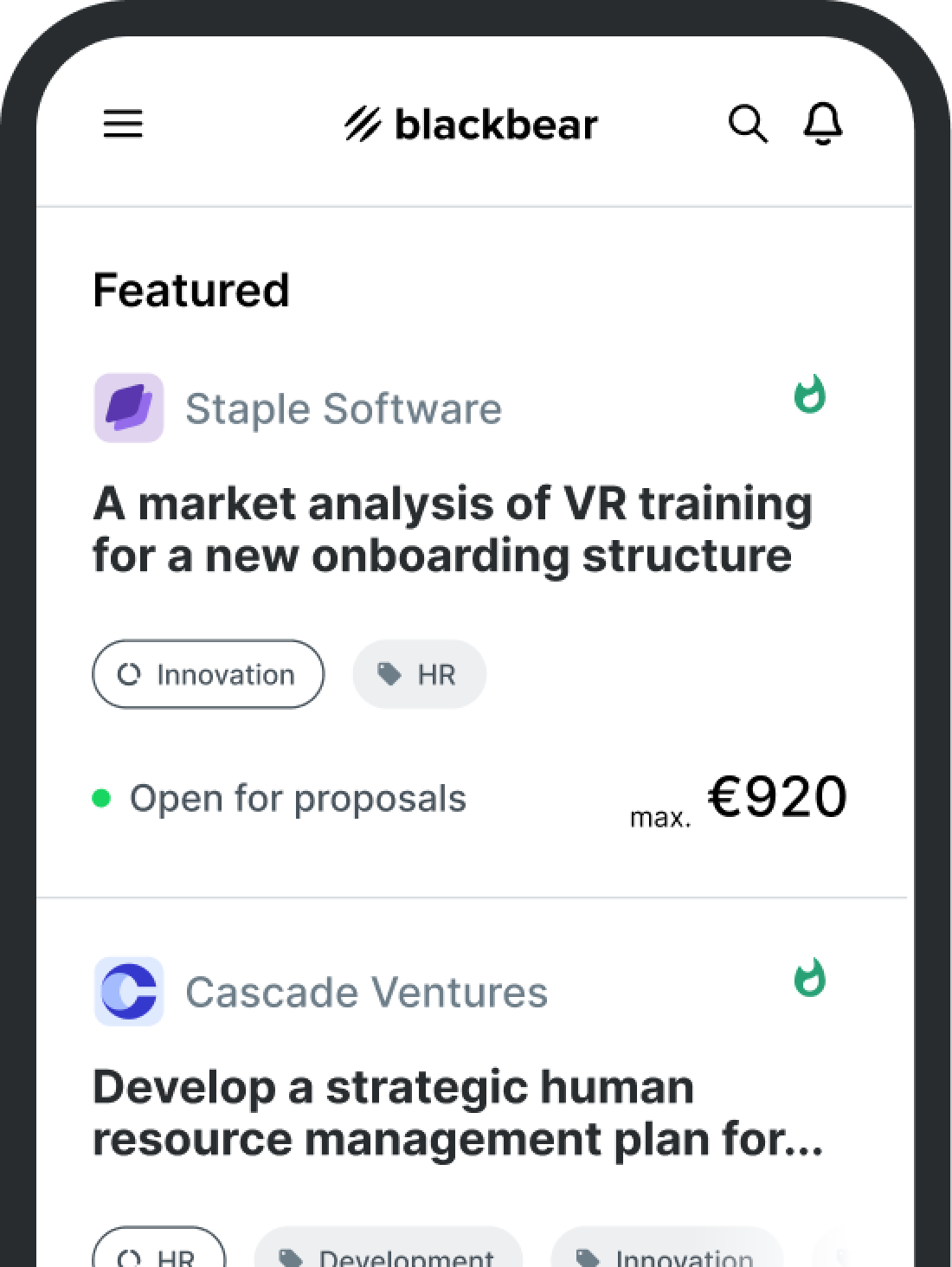Freelance Project Management — The Ultimate Guide
Freelance project management can be challenging. Here are some tried and tested techniques and tools to ensure success.
Robynn Farrell
June 2nd, 2023

Freelance project management can be challenging. It can include anything from overseeing sales and marketing to website development or paid ad campaigns. Whatever the task at hand, ensuring that a project is finished on schedule and meets the client's requirements is imperative.
Missed deadlines and dissatisfied customers are only two issues that can arise from poor freelance project management abilities.
Additionally, if your customers are dissatisfied, your reputation will suffer. And, when your reputation declines, you'll lose clients, resulting in revenue loss. So, to help you get started, here are some guidelines to include in your project management strategy.
But it's not always as simple as implementing effective freelancing project management tools and techniques. Businesses often have insufficient resources available to manage and streamline core or non-core projects. This is where outsourcing project management can be a cost-effective solution.
In this ultimate guide to freelance project management, we'll look at:

- What Is Project Management?
- Key Aspects Of Project Management
- Types of Project Management
- Project Management Tools and Techniques
What Is Project Management?
Freelance project management involves planning, organising, and managing resources to successfully complete a specific project within defined parameters. It includes overseeing all aspects of a project, from initiation to closure, to ensure that project goals are achieved effectively and efficiently.Key Aspects Of Project Management:
- Defining Project Objectives: Clearly define the project's goals, scope, deliverables, and success criteria.
- Planning: Develop a comprehensive project plan that outlines the activities, tasks, timelines, resources, and dependencies required to achieve the project objectives.
- Organising and Resource Management: Assemble a project team, define roles and responsibilities, and allocate resources appropriately.
- Communication and Stakeholder Management: Establish effective communication channels and strategies to keep stakeholders informed about the project's progress, risks, and changes.
- Execution and Monitoring: Implement the project plan, monitor progress, and make necessary adjustments.
- Risk Management: Identify potential risks and develop strategies to mitigate them.
- Quality Control: Implement quality control processes to ensure project deliverables meet the required standards and customer expectations.
- Closure and Evaluation: Formalise project closure by ensuring that all project deliverables are complete and conduct a project evaluation to identify areas for improvement in future projects.
Types of Project Management and Techniques
There are several types of project management methodologies or approaches that organisations can adopt based on their specific needs and preferences. Here are five common types of project management techniques:1. Waterfall
The waterfall approach is a traditional and linear project management methodology. It follows a sequential process, where each phase (requirements, design, development, testing, deployment) is completed before moving on to the next. This approach is best suited for projects with well-defined and stable requirements.2. Agile
Agile is an iterative and flexible approach emphasising collaboration, continuous feedback, and adaptability. It involves breaking the project into smaller iterations or sprints, with regular reviews and adjustments based on stakeholder feedback. Agile techniques like Scrum and Kanban enable teams to respond to changing requirements and deliver value incrementally.- Scrum is an agile framework emphasising collaboration, self-organisation, and iterative development. It involves cross-functional teams working in short iterations called sprints to deliver small increments of the project. Scrum incorporates regular meetings such as daily stand-ups, sprint planning, sprint review, and retrospectives to ensure transparency and adaptability.
3. Lean
Lean project management aims to eliminate waste and optimise processes. It focuses on delivering value to the customer by identifying and eliminating non-value-added activities. Lean project management seeks to improve efficiency, reduce costs, and enhance customer satisfaction.4. Critical Path Method (CPM)
CPM is a project management technique that focuses on identifying the critical path, or the longest chain of associated tasks determining the project's overall duration. It helps in scheduling and resource allocation, ensuring the project is completed within the shortest possible time.5. Hybrid
Hybrid project management combines elements from different methodologies to create a customised approach that suits the specific needs of a project or organisation. It allows flexibility in selecting the most appropriate methods, tools, and techniques based on the project's characteristics and requirements.Project Management Tools and Techniques
Effective freelance project management requires a combination of technical skills, leadership abilities, and strong communication and problem-solving capabilities, which can be difficult to juggle. Here are some techniques to help you overcome some of the challenges that come with freelance project management.
Project Management Techniques
Project management techniques are methodologies or approaches used to plan, execute, and control projects. Here are seven project management techniques to help manage freelance projects:1. Coordinating Teams
To help align your team of freelancers, using a Responsible, Accountable, Consultant, and Informant-different (RACI) or Responsibility Assignment Matrix can be significantly effective. It helps to visually define the responsibilities and roles of each freelance team member as well as various project activities.2. Tracking Deadlines
Keeping track of various clients, multiple projects, and aspects of each project can be challenging. Using a calendar that can help you keep track at a single glance will be a huge advantage. Even better, choosing an app that allows you to assign and track tasks to team members and even schedule meetings will help keep you organised.3. Managing Tasks
Choosing the best task management method is imperative to ensure everything runs smoothly. A Kanban Board or Gant Chart are common techniques for organising and managing your task.- Kanban is a visual project management method that emphasises visualising work and limiting work in progress. It involves using a Kanban board to visualise tasks and their flow through different stages. This approach helps teams prioritise work, manage capacity, and maintain a steady workflow.
- A Gantt chart is a visual representation of project tasks, milestones, and timelines. It helps schedule and track project progress, showing each task's start and end dates, dependencies, and critical path. Gantt charts aid in understanding project timelines and managing resource allocation.
4. Create Project Milestones
Implementing a Work Breakdown Structure (WBS) is a technique that involves breaking down the project into smaller, more manageable work packages and tasks. It helps to organise and define the scope of the project, identify dependencies, and allocate resources effectively. A great place to start is to set project milestones based on phases in the project — from ideation to implementation. Another option is Objectives and Key Results (OKR), which involves setting measurable goals to work towards and achieve.5. Tracking Performance and Value
Earned Value Management (EVM) is a great project management technique used to measure project performance and progress based on planned work, actual work, and cost. EVM provides insights into project performance, variance analysis, and forecasting and helps ensure that you utilise your resources efficiently, stay on track, and stay within your allotted budget and schedule.6. Stakeholder Communication
Each client or stakeholder may require a different approach when it comes to communication. Regardless, most clients usually appreciate an engaging and transparent communication approach. After all, they are entrusting you with their business processes, so keeping them up-to-date will help to instill trust and set their minds at ease. Techniques such as stakeholder identification, analysis, communication, and relationship management ensure effective collaboration and address stakeholder needs and expectations.7. Risk Management
Risk management involves identifying, analysing, and mitigating risks that may impact project success. Techniques such as risk identification, risk assessment, risk prioritisation, and risk response planning help project managers proactively address potential risks and uncertainties.Best Project Management Tools for Freelancers
There are numerous project management tools available, each with its own set of features and benefits. The best project management tool for you depends on your specific needs, team size, project complexity, and budget. Here are some widely recognised project management tools:- Trello: Trello is a popular and user-friendly Kanban-style project management tool. It uses boards, lists, and cards to help teams visualise and track tasks. It's suitable for small to medium-sized projects and teams.
- Asana: Asana is a versatile project management tool that offers task management, team collaboration, and project tracking features. It provides various views, including lists, boards, and timelines, to accommodate different project needs.
- Jira: Jira is a comprehensive project management tool widely used in software development and IT industries. It offers features for issue tracking, agile planning, and team collaboration. It's highly customisable and can be tailored to fit different project methodologies.
- Monday.com: Monday.com is a visual project management tool that provides customisable boards to track tasks, projects, and workflows. It offers features for team collaboration, automation, and reporting.
- Teamwork: Teamwork is a comprehensive project management tool that covers various aspects, including task management, collaboration, time tracking, and reporting. It's suitable for both small and large teams.
